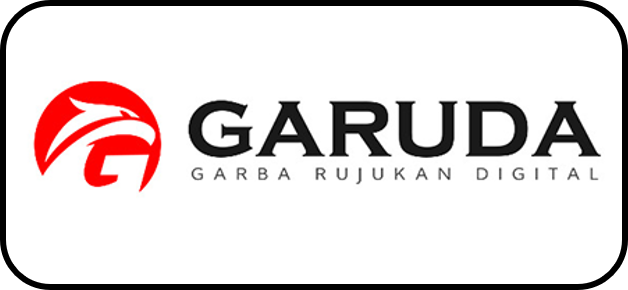Integrating Servqual-Kano-QFD for Social Insurance Service Quality Improvement in Surabaya
Downloads
For companies engaged in the service-providing sector, good service by meeting customer's desires and needs is a must in order to thrive competitively. This case study was conducted on service provided by the government social insurance company engaged in traffic accident insurance services in Surabaya. As an industry that provides service, customer satisfaction is of importance in order to gain trust from the public, reduce negative opinion in public, and support the objective of good governance. This study integrated the SERVQUAL-Kano method to evaluate customer satisfaction concerning 18 service attributes related to service provided by the social insurance company. Further efforts were then made to find solutions for service attributes with low satisfaction scores by using the Quality Function Deployment (QFD) method. Therefore, the results can help to improve the quality of service. The results were in the form of a priority improvement design for strategic decision recommendations that can be implemented by the company to increase customer satisfaction.
Alonso-Almeida, M. del M., Rodríguez-Antón, J. M. dan Rubio-Andrada, L. 2012. Reasons for implementing certified quality systems and impact on performance: An analysis of the hotel industry. Service Industries Journal.
Apornak, A. 2017. Customer satisfaction measurement using SERVQUAL model, integration Kano and QFD approach in an educational institution. International Journal of Productivity and Quality Management.
Bala, N., Sandhu, H. . dan Nagpal, N. 2011. Measuring Life Insurance Service Quality: An Empirical Assessment of SERVQUAL Instrument. International Business Research.
Basfirinci, C. and Mitra, A. 2015. A cross cultural investigation of airlines service quality through integration of Servqual and the Kano model. Journal of Air Transport Management.
Chang, B. L. et al. 2019. Quality gaps dan priorities for improvement of healthcare service for patients with prolonged mechanical ventilation in the view of family. Journal of the Formosan Medical Association.
Chen, L. H. dan Kuo, Y. F. 2011. Understanding e-learning service quality of a commercial bank by using Kano's model. Total Quality Management and Business Excellence.
Cho, I. J., Kim, Y. J. dan Kwak, C. 2016. Application of SERVQUAL and fuzzy quality function deployment to service improvement in service centres of electronics companies. Total Quality Management and Business Excellence.
Cohen, L. 1999. Quality Functional Deployment: How to Make QFD Work for You. 5th ed. Edited by N. York. Addison Wesley Longman, Inc.
Erdil, N. O. dan Arani, O. M. 2019. Quality function deployment: more than a design tool. International Journal of Quality and Service Sciences, 11(2): 142–166.
Ji, P. et al. 2014. Quantification and integration of Kanos model into QFD for optimising product design. International Journal of Production Research.
Kano, N. et al. 1984. Attractive quality and must-be quality. Journal of the Japanese Society for Quality Control.
Khorshidi, H. A., Nikfalazar, S. dan Gunawan, I. 2016. Statistical process control application on service quality using SERVQUAL and QFD with a case study in trains' services. TQM Journal.
Low, S. et al. 2015. A Proposed Kano-inspired Framework Applied to Job Satisfaction for Mature Singaporeans. Procedia Manufacturing.
Mikulić, J. dan Prebežac, D. 2011. A critical review of techniques for classifying quality attributes in the Kano model. Managing Service Quality.
Pakizehkar, H. et al. 2016. The Application of Integration of Kano's Model, AHP Technique and QFD Matrix in Prioritizing the Bank's Substructions. Procedia - Social and Behavioral Sciences.
Parasuraman, a, Zeithaml, V. a dan Berry, L. L. 1988. SERQUAL: A Multiple-Item scale for Measuring Consumer Perceptions of Service Quality. Journal of Retailing.
Saadon, M. S. I. bin 2012. The Effectiveness of Integrating Kano ModelandServqual Into Quality Function Deployment ( Qfd ) for Developing. Journal of WEI Business and Economics-December 2012.
Sam, E. F., Hamidu, O. dan Daniels, S. 2018. SERVQUAL analysis of public bus transport services in Kumasi metropolis, Ghana: Core user perspectives. Case Studies on Transport Policy.
Shahin, A. dan Ebrahimi, S. 2020. Revising the interrelationship matrix of house of quality by the Kano model. TQM Journal.
Stefano, N. M. et al. 2015. A fuzzy SERVQUAL based method for evaluated of service quality in the hotel industry. in Procedia CIRP.
Tan, K. C. dan Pawitra, T. A. 2001. Integrating SERVQUAL and Kano's model into QFD for service excellence development. Managing Service Quality: An International Journal, 11(6): 418–430.
Tsoukatos, E. dan Rand, G. K. 2006. Path analysis of perceived service quality, satisfaction and loyalty in Greek insurance. Managing Service Quality.
Vaziri, J. dan Beheshtinia, M. A. 2016. A holistic fuzzy approach to create competitive advantage via quality management in services industry (case study: life-insurance services). Management Decision, 54(8): 2035–2062.
Yang, C. C. dan Yang, K. J. 2011. An integrated model of value creation based on the refined Kano's modelandthe blue ocean strategy. Total Quality Management and Business Excellence.
Yeh, T. M. dan Chen, S. H. 2014. Integrating refined Kano model, quality function deployment, and grey relational analysis to improve service quality of nursing homes. Human Factors and Ergonomics In Manufacturing.
Authors who publish with this journal agree to the following terms:
1. The author(s) hold the copyright of the article without restrictions.
2. The author(s) retain publishing rights without restrictions
3. The legal formal aspect of journal publication accessibility refers to Creative Commons Attribution (CC BY).
















